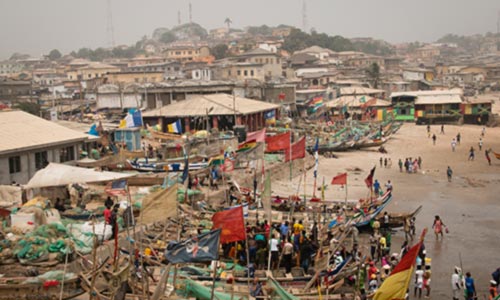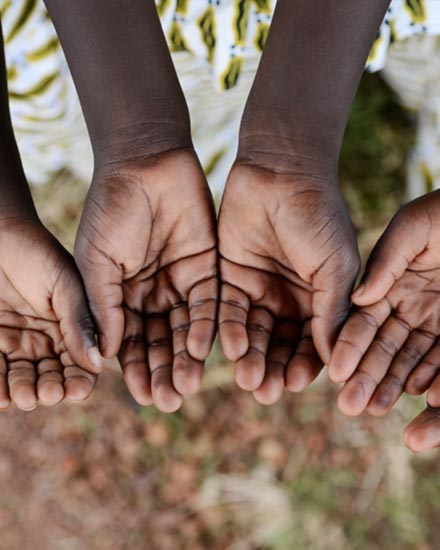We’ve all heard about water shortage and poverty in Africa. At the very least we’ve caught a glimpse of a newspaper headline about regional drought, or maybe even donated to some kind of global relief organization working to provide drinking water to impoverished communities. With the availability of drinkable water decreasing and the need for water increasing with population growth, both local and world leaders have been working to address the issue of water scarcity in Africa for decades. But far too often, desalination is left out of the conversation.
Time and again, history has shown us that poverty relief and development begin with reliable access to clean water. Looking at the nature of water scarcity in Africa, it seems necessary to consider how a seawater desalination industry could be part of the solution to tackle several of Africa’s harsh realities.
Water shortages in Africa
 Sub-Saharan Africa has the largest number of water-scarce countries than any other region in the world. Today, 51 percent of people in these countries do not have access to clean water. Much of the African continent relies on rainfall and surface water for their water supply. Of the freshwater sources that do exist, many have been heavily polluted and are no longer fit for humans or animals to drink. Because of this, experts estimate that between 75 and 250 million people will live in water-stressed areas of Africa by 2030.
Sub-Saharan Africa has the largest number of water-scarce countries than any other region in the world. Today, 51 percent of people in these countries do not have access to clean water. Much of the African continent relies on rainfall and surface water for their water supply. Of the freshwater sources that do exist, many have been heavily polluted and are no longer fit for humans or animals to drink. Because of this, experts estimate that between 75 and 250 million people will live in water-stressed areas of Africa by 2030.
To no surprise, a shortage of drinking water in African communities also means a chronic shortage of water that can be used for agriculture, which has egregious impacts on food security. According to the United Nations Development Program (UNDP), 93 percent of African agriculture is rainfed, and about half of the African population relies on agriculture for food and income. With rainfall on the decline and generally inconsistent, agricultural communities find themselves struggling to make ends meet over a lack of reliable water sources for crops and livestock. As a result, the African continent is home to the largest food-insecure population on Earth. The UNDP reports that within the last decade 1 in 4 Africans were undernourished.
What is driving water scarcity in Africa?
Behind Australia, Africa is the world’s second-most arid continent. Such an arid climate is naturally prone to water scarcity as rain only falls seasonally and most of the continent relies on rainfed surface water for its year-round water supply. This has made maintaining a reliable source of water a difficult reality for African communities for centuries.
 But as with other parts of the world, climate change is now making matters worse. Climate change is causing temperatures to rise and rainfall to decrease on the African continent. As a result, we’re seeing more desertification, less river flow, and drought is becoming the norm in many sub-Saharan nations. For example, just last year South Africa experienced its lowest annual rainfall since rainfall was first recorded in 1904—a harsh reality for a country that is known to be over-dependent on surface water.
But as with other parts of the world, climate change is now making matters worse. Climate change is causing temperatures to rise and rainfall to decrease on the African continent. As a result, we’re seeing more desertification, less river flow, and drought is becoming the norm in many sub-Saharan nations. For example, just last year South Africa experienced its lowest annual rainfall since rainfall was first recorded in 1904—a harsh reality for a country that is known to be over-dependent on surface water.
In addition to climate change, much of Africa’s water stress stems from the growing pains of development caused by rapid urbanization. More and more Africans are moving to cities. This urbanization combined with poor and outdated water infrastructure can’t support the growing communities. Such is the case in Algeria and Ghana, both of which have some of the fastest growing urban populations in the world.
Take Algeria for example. Naturally, part of Algeria’s water issues stem from seasonal and minimal rainfall, but the majority of the problem is rooted in the mass migration of rural Algerians to the cities within the last decade. 60 percent of Algeria’s population now lives in its cities that are, as a result, experiencing huge structural water shortages. They can’t bring water into the cities fast enough! That’s where desalination technology comes in.
Desalination to combat water scarcity
Seawater desalination treatment stands out as an efficient solution to Africa’s timely water shortage issues. On an arid continent where 39 out of 54 total countries border an ocean or a sea, there’s really no question about the practicality of investing in desalination technology on a mass scale to supplement water conservation and recycling.
Several African nations are already successfully utilizing seawater desalination to meet their water needs. On opposite ends of the continent, Algeria and South Africa are the primary users of this technology in Africa. Other countries such as Libya, Ghana, and Namibia have operational plants as well, just to name few. Algeria’s capital, Oran, is home to the continent’s largest desalination plant, which provides drinkable water to a whopping 5 million Oran residents each day.
Desalination in pursuit of socio-economic development
Many point to lack of access to clean water as the cause of Africa’s high poverty level. That said, while the need for desalination to provide safe and reliable drinking water in Africa’s water-scarce regions is unquestionable, desalination can do more for Africa’s nations than just provide drinkable water. Investing in desalinated seawater can create jobs, revenue, and social stability in African communities.
 For example, the first ever desalination plant in Ghana—and all of West Africa for that matter—was inaugurated in 2015. The plant provides enough water for the 500,000 residents of Accra, in addition to creating 400 jobs. Desalination technology can solve the issue of water shortage and produce a new industry dedicated to ensuring that local and regional water needs are met.
For example, the first ever desalination plant in Ghana—and all of West Africa for that matter—was inaugurated in 2015. The plant provides enough water for the 500,000 residents of Accra, in addition to creating 400 jobs. Desalination technology can solve the issue of water shortage and produce a new industry dedicated to ensuring that local and regional water needs are met.
The job creation and economic growth that comes from reverse osmosis technology isn’t only limited to within the water treatment industry itself. Many job-creating industries require fresh water to operate, and desalination can provide just that. For example, in 2013, ISI Water built a seawater desalination plant to provide water for a large gold mine in Mauritania.
Other examples of this include South Africa’s largest desalination plant, the Mossel Bay Desalination Plant on the Western Cape, which helps supply water to a local refinery. Additionally, Algeria’s Skikda Desalination Plant supplies enough drinking water for all of Skikda, as well as the water needed for the local petrochemical plant. In this way, we see desalination technology supporting industry and development in addition to meeting basic drinking water needs.
The humanitarian implications of pursuing desalination technology in Africa are also huge and unexplored. Several reputable non-profits exist globally to assist with water security in Africa, many of them focusing on building local well infrastructure in rural communities. This important work needs to continue, but could be effectively expanded by efforts to invest in small, community-sized (or, if possible, industrial-sized) desalination technology. This way, rather than providing what is often sporadic emergency relief, humanitarian organizations could set water-scarce regions up for success with the technology to produce its own water supply.
On the second most arid continent in the world, seawater desalination is a simple solution to water shortage. Today, the declining availability of drinkable water in Africa paired with an increase in demand for water from its growing population has made the need for a solution more urgent than ever. Desalination technology has the unique potential to quench the thirst of African communities while creating jobs and lasting infrastructure designed to meet both domestic and industrial water needs.
If your organization or municipality is ready for an industrial desalination system, contact ISI Water today.
